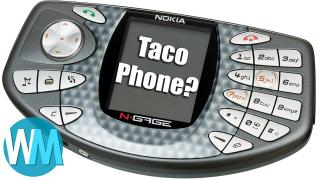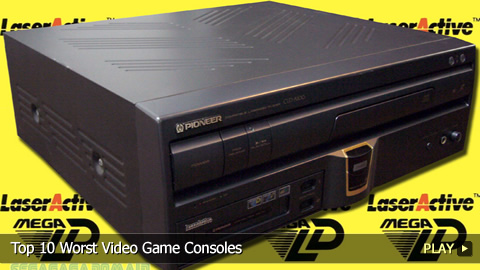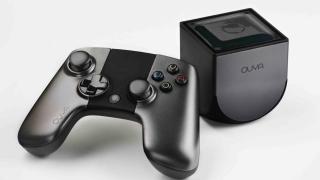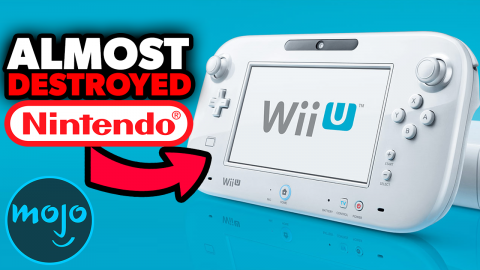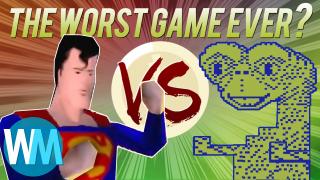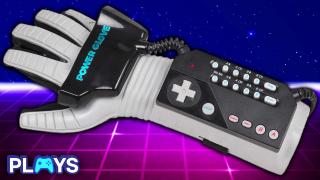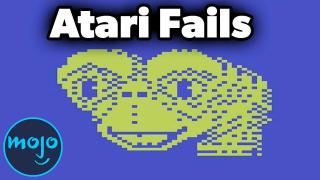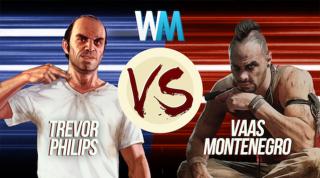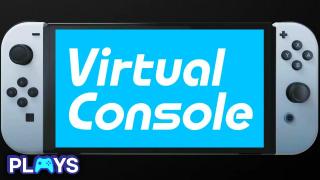Top 20 Worst Video Game Consoles
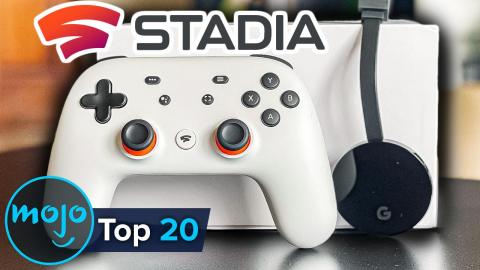
#20: Commodore 64 Games System
Released in 1982, the original Commodore 64 was a titan in the earlier days of PC gaming. A home console version may have sounded like a great idea. But Commodore didn’t release it unil 8 years later. Not only was the market already dominated by Nintendo and Sega, but 16-bit was quickly becoming the norm. However, it also failed due to pretty fatal flaw. The system was compatible with all Commodore 64 cartridges, yet the exclusion of a keyboard meant that most of them couldn’t be played. The system was dated tech, and without the games to support it, there was nothing to bring players in. It only released in Europe. And of the 80,000 units produced, only a quarter of them sold.
#19: TurboExpress
Commodore isn’t the only company to try repurposing its technology for a new system. NEC released this portable version of its home console, the TurboGrafx-16, in 1990. It was actually quite advanced for the time, boasting an LCD screen with backlit display and the ability to play the cartridges of its home console counterpart. Unfortunately, being innovative actually harmed it. The impressive tech meant much shorter battery life and a higher price than competitors, which many consumers weren’t willing to pay. LCD was still very new, resulting in pixelation failure in many units. Additionally, since most of its games were designed to be played at home, text-heavy games were extremely hard to read on the smaller screen.
#18: Nuon
Making the PlayStation 2 compatible with DVDs helped boost its public image for the average consumer. But when VM Labs tried to do something similar, it failed miserably. Granted, they’re not exactly comparable, but 2000’s Nuon seemed like it could’ve been a hit with the right business mind. It was marketed as a high-end DVD player with several features others didn’t, like a Zoom tool. It could also play games, but only received eight over its lifetime, one of which was recalled. None of them played particularly well, and only four movies would take advantage of the DVD features. It cost more than the average DVD player with basically nothing to show for it.
#17: Ouya
After an extremely successful Kickstarter in 2012, it appeared the Ouya was going to make a strong impression the following year. The micro-console ran on a modified Android OS, promoted an easy way to mod, and many games were free to try. It was supposed to be more affordable than other consoles, and to be fair, it was. But it didn’t have the compelling games to justify the already low price point of $99. And many of them were already available on smart phones. The Ouya’s poor internet connectivity also meant those games might not run as well. The controller had its own issues, like input lag and buttons that would stick. The console was discontinued in 2015.
#16: LaserActive
Raise your hand if you remember LaserDisc! The format was a more advanced, and therefore more expensive, counterpart to VHS. In 1993, Pioneer Corporation released the LaserActive, which could play LaserDiscs, CDs, and video games. Back then, CDs were also pretty pricey to manufacture. And so the LaserActive launched at the insane price point of $970. None of its exclusive games were remarkable, but it partnered with other companies to release add-ons called PACs. If you wanted to also play CD-ROMs or games from the Sega Genesis or TurboGrax-16, you’d have to fork over a lot more cash. And it’s not as if the graphics and gameplay were any better. Only around 10,000 units sold before it was discontinued in 1996.
#15: Gakken Compact Vision TV Boy
Released solely in Japan in 1983, Gakken’s TV Boy never stood a chance. That’s because it launched mere months after Nintendo’s Famicom and Sega’s SG-1000. The company created the console to compete with Epoch and seemingly never saw the two future giants coming. So, when the TV Boy launched, it was already behind the times. There weren’t as many games or features, and those it did have weren’t up to snuff. In fact, only six games released for the TV Boy, the most notable being a “Frogger” port. Moreover, its competitor Epoch released a new model of its Cassette Vision console at a cheaper price. Naturally, low sales followed and Gakken never released another console.
#14: HyperScan
The seventh generation of consoles saw tremendous growth. While toy company Mattel had a unique idea with the HyperScan, that doesn’t mean it was a good one. The console released in late 2006 for the relatively low price of $69.99. It used cards earned in $10 booster packs to add characters, levels, and other features into your base game. Its games only cost $20. But consumers still didn’t see the point of rolling the dice on randomized card packs when every other console gave you full experiences. Plus, if you wanted to unlock everything, you’d have to spend a whole lot more. Factor in poor controllers, long load times, and its miniscule game library, it’s no wonder it was discontinued the following year.
#13: RCA Studio II
Top 10 WORST Video Game Consoles of All Time (Redux)
Like Gakken’s TV Boy, the RCA Studio II was outdated by its competitors on release and was ultimately destroyed by what came after. It launched in 1977 and had its controllers, twin keypads, built into the unit. Its games were also only in black and white; other consoles of the time, like the Fairchild Channel F, already had colorized games. Additionally, the launch of the Atari 2600 less than a year later was detrimental. With groundbreaking games and a joystick, the new standard in controllers, it quickly made the Studio II look like a relic. As a result, it sold very poorly, resulting in layoffs and a discontinuation in early 1978.
#12: SouljaGame
Soulja Boy is mostly known for his music career, yet one of his other ventures has been justifiably criticized. In 2018, the rapper released his own console named the SouljaGame. Almost immediately, it was lambasted from every corner of the internet for being a very blatant rip-off. It was really just a Nintendo and Sega emulator made by Chinese company, Anbernic. Worse, he charged a higher price and tried to sell other expensive emulators, like the SouljaGame Fuze. Surprising absolutely no one, Nintendo took legal action and the rapper was forced to remove the consoles from his website the same month they launched. That hasn’t stopped him from releasing other ripoffs over the years, though.
#11: Game.com
Top 10 Worst Video Game Consoles
Tiger Electronics’ Game.com is a perfect example of innovative features hurting a product. Released in 1997, it was the first handheld to feature a touch screen and the ability to connect to the internet. Sounds pretty cool, right? Well, it wasn’t. The internet feature wasn’t used in games, only to read your basic, text-based websites of the time. The screen was criticized for being too small and blurry, with its touch capability being impressive in theory but unresponsive in practice. While it did receive ports of popular games, none of them were that good and they were only in black and white. It would’ve been tough to break through Nintendo’s chokehold regardless, but nothing about the Game.com helped its chances.
#10: Gizmondo
Before smart phones, several companies tried releasing handheld/phone hybrids. None of them found much success, including the trainwreck that was Tiger Telematics’ Gizmondo. Leading up to the 2005 launch, the console was marketed as a jack of many trades, being able to take pictures and use GPS. It launched at $400, or at $229 for a version that featured targeted “Smart Adds.” However, Tiger announced a new model featuring a wider screen and the ability to make phone calls months before the first one was out. Low sales, and reports of the CEO’s ties to the Swedish Mafia, caused Tiger to go bankrupt before that new model could even be released. The Gizmondo lasted less than a year and sold fewer than 25,000 units.
#9: Action Max
Top 10 Video Game Characters That Would Make Great Action Figures
When we think of the requirements for defining a video game console, the ability to play games seems like a pretty simple one. And yet, the Action Max couldn’t even do that. Not on its own, anyway. Released in 1987 by toy company Worlds of Wonder, the console required you to have a VCR to play its VHS games. Moving past the oddity of playing games via VHS, the Action Max came packaged with a light gun controller. Meaning, of the five games it ever got, they were all in the same genre. Moreover, they were all point-based without any way to actually win or lose. Needless to say, it didn’t last very long.
#8: R-Zone
Another Top 10 Worst Video Game Consoles
Even before the Game.com, Tiger Electronics struggled to break into the console market. Though with ideas like these, the struggle makes sense. 1995’s R-Zone was a portable console consisting of a visor-like headband and a controller. Each game had its own separate LCD screen that projected its monochromatic design directly into your eye. Even by mid-90s standards, it looked absolutely ridiculous, and it was panned by players and critics appropriately. Tiger attempted to course-correct with different versions that did away with the headband. But that didn’t change the fact that none of its games were fun to play. In 1997, Tiger put all versions of the R-zone to rest.
#7: Pippin
Apple is a tech giant, but the Pippin proved not all of its products are worth the price tag. Released in 1996 through a partnership with Bandai, the Pippin used Mac OS software of the time and was meant to be a multimedia platform. Like the Mac, you could connect to the internet. But it couldn’t run web browsers most people used at the time. All of its bells and whistles earned it a higher price than Nintendo, Sega, and Sony’s consoles. Its library of games, which leaned a bit too heavily into Edutainment, didn’t leave much of an impression. All in all, it only sold around 42,000 units before Apple discontinued it in 1997.
#6: 3DO Interactive Multiplayer
Top 10 FAILED Video Game Consoles
The 90s were full of tech companies trying to produce the next big console. So anything that launched at too high a price was already doomed. The 3DO released at $700 in 1993, a price reached through the use of CDs and outsourcing production to third parties like Panasonic. Although it had impressive specs, that didn’t necessarily translate to being a good console. It only had one game at launch, and the majority of its library would be better described as poorly made, interactive movies rather than actual games. Though its price would drop throughout its life cycle, later systems like the Sega Saturn and PlayStation would make it look dated. The 3DO was discontinued in 1996.
#5: Atari 5200
Superman 64 VS E.T. Atari: Battle for the Worst Game Ever
Atari may have provided gamers with some good years with the 2600, but its follow-up was a disaster. Released in 1982, the 5200 promised arcade graphics and an advanced controller. While its graphics certainly looked better than the 2600’s, most of its library consisted of updated versions of the same games. An adapter for 2600 cartridges would later release, but that was far from the only problem. The cheaply-designed joystick was prone to breaking, making the controller widely regarded as one of the worst of all time. More importantly, it was one of several ways in which Atari saturated the home console market, leading to the infamous 1983 crash. It was discontinued in ‘84 after reaching only a fraction of the 2600’s sales.
#4: N-Gage
The Worst Video Game Controller of All Time
Nokia’s N-Gage was another failed phone/console hybrid. Released in 2003, it was meant to compete with the Game Boy Advance. However, it was most definitely a phone first and the buttons reflected that. They were too small and awkward for players to truly enjoy the gameplay. Changing your games was also a major hassle. Due to the handheld’s design, you had to remove its plastic cover and battery in order to do so. Not many were interested, leading to some retailers offering discounts mere weeks after launch. Nokia released another model in 2004 that fixed some issues. But the damage was irreparable and the so-called “taco phone” was the laughing stock of the internet until it was discontinued in 2006.
#3: Atari Jaguar
Top 10 Atari FAILS
The 5200 was a disaster; the Jaguar was downright embarrassing. Atari marketed its fifth-generation console as 64-bit. But that was just a marketing ploy since it had two 32-bit processors. It wasn’t as impressive as the company wanted consumers to think. The controller was also criticized since Atari, for some reason, kept the awkward keypad from its older consoles. As far as games were concerned, pickings were slim. The way the Jaguar was designed put extra strain on development, leading to less support from third parties. Atari attempted to support it with a CD-based add-on, but with the brand new PlayStation and Sega Saturn, no one bit. The Jaguar died in 1996, as did Atari’s chances of staying in the home console market.
#2: Philips CD-i
Trevor Philips Vs Vaas Montenegro
The CD-i is best remembered for its non-Nintendo developed “Zelda” and “Mario” games. And those are definitely NOT good things to be remembered for. Philips announced the CD-i four years before it was released. In those days, that caused hype to die down significantly. Even when it did launch in 1990, it was for $1,000. Like many others of the era, the high price came from it being a multimedia player. In fact, it didn’t focus on games until several years and price drops later. But because gaming hadn’t been its main focus, it was significantly underpowered in that field compared to everything else. It’s a good thing Philips is such a big company; this venture reportedly lost it close to a billion dollars.
#1: Virtual Boy
Nintendo DOES NOT Need The Virtual Console
Every gamer owes a debt to Nintendo, but it really should’ve known better with the Virtual Boy. This 1995 portable-ish platform promised stereoscopic 3D through cutting-edge technology. Players propped its headpiece up on a flat surface, which displayed a black and red color scheme. Not only was the design cumbersome, but it could cause eye strain. Nintendo reportedly rushed it to market in order to focus on and use more resources for the upcoming N64. Even still, the new tech cost $180, quite pricey for a handheld. It wasn’t fun to play, it could actively hurt you, and it only received 22 games during its lifespan. With only 770,000 units sold, it is by far Nintendo’s biggest console failure. It only lasted a year.


